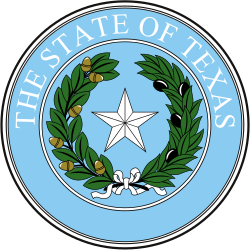| |||||||||||||||||||||||||
All 30 seats in the Texas Senate 16 seats needed for a majority | |||||||||||||||||||||||||
|---|---|---|---|---|---|---|---|---|---|---|---|---|---|---|---|---|---|---|---|---|---|---|---|---|---|
| |||||||||||||||||||||||||
 Democratic hold Democratic gain Republican hold Independent gain Non-district territory | |||||||||||||||||||||||||
| |||||||||||||||||||||||||
| Elections in Texas |
|---|
 |
The 1873 Texas Senate elections took place as part of the 1873 Texas general election. Texas voters elected state senators in all 30 State Senate districts to staggered terms, although none of these term lengths would end up mattering. The winners of this election served in the 14th Texas Legislature which called a constitutional convention. This led to the passage of the 1876 Texas Constitution, dramatically restructuring the state's government, which forced all Senators to run for re-election in 1876 concurrently with the election for the ratification of the new constitution.